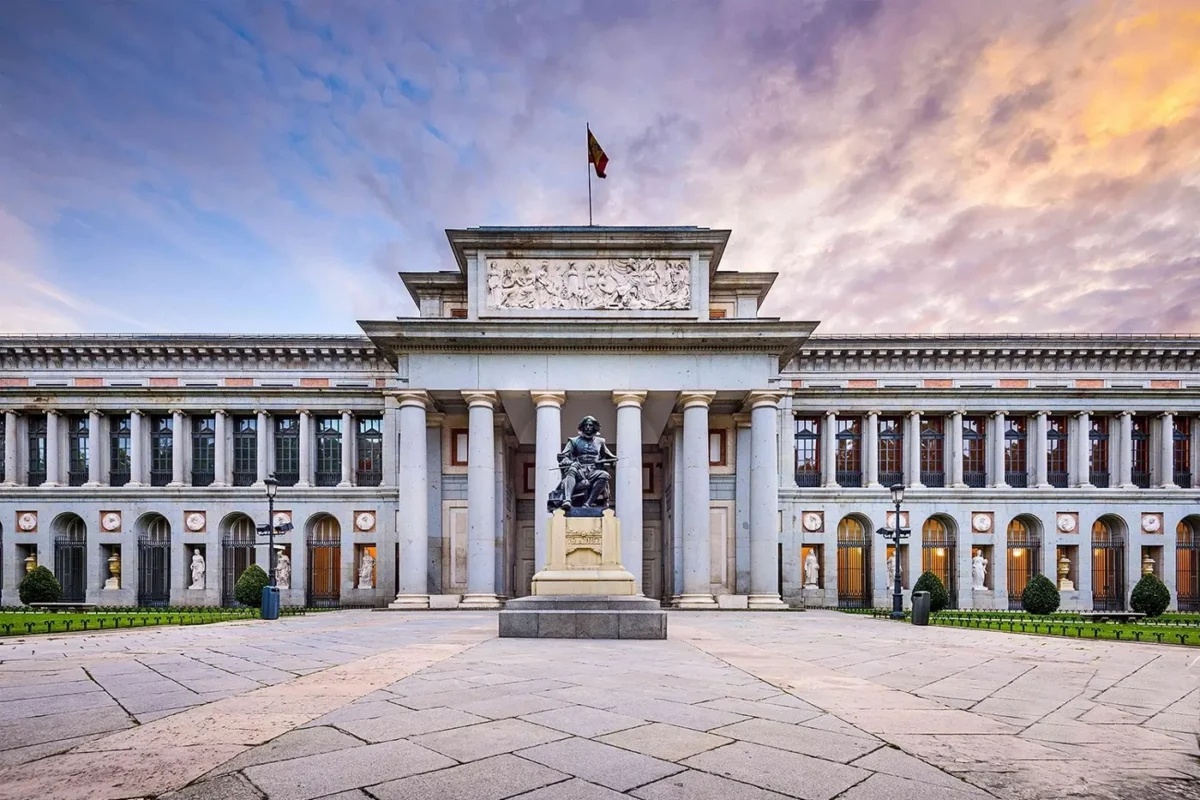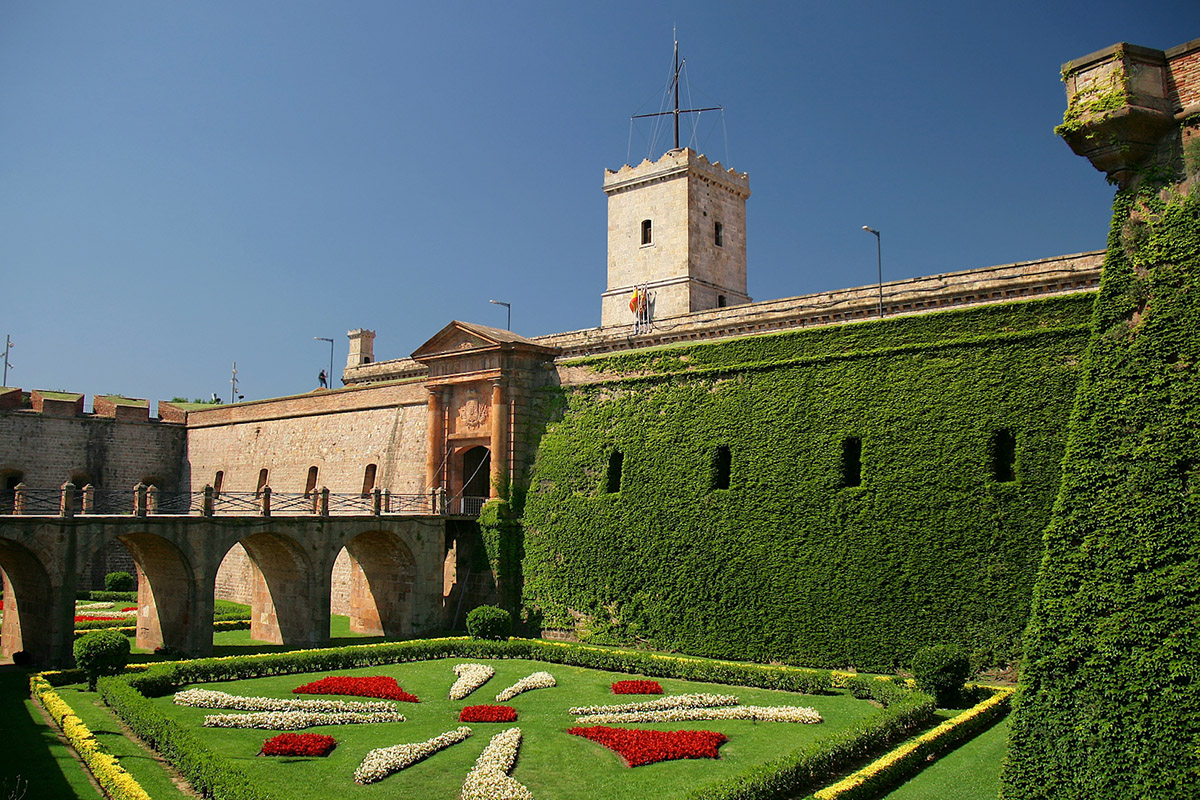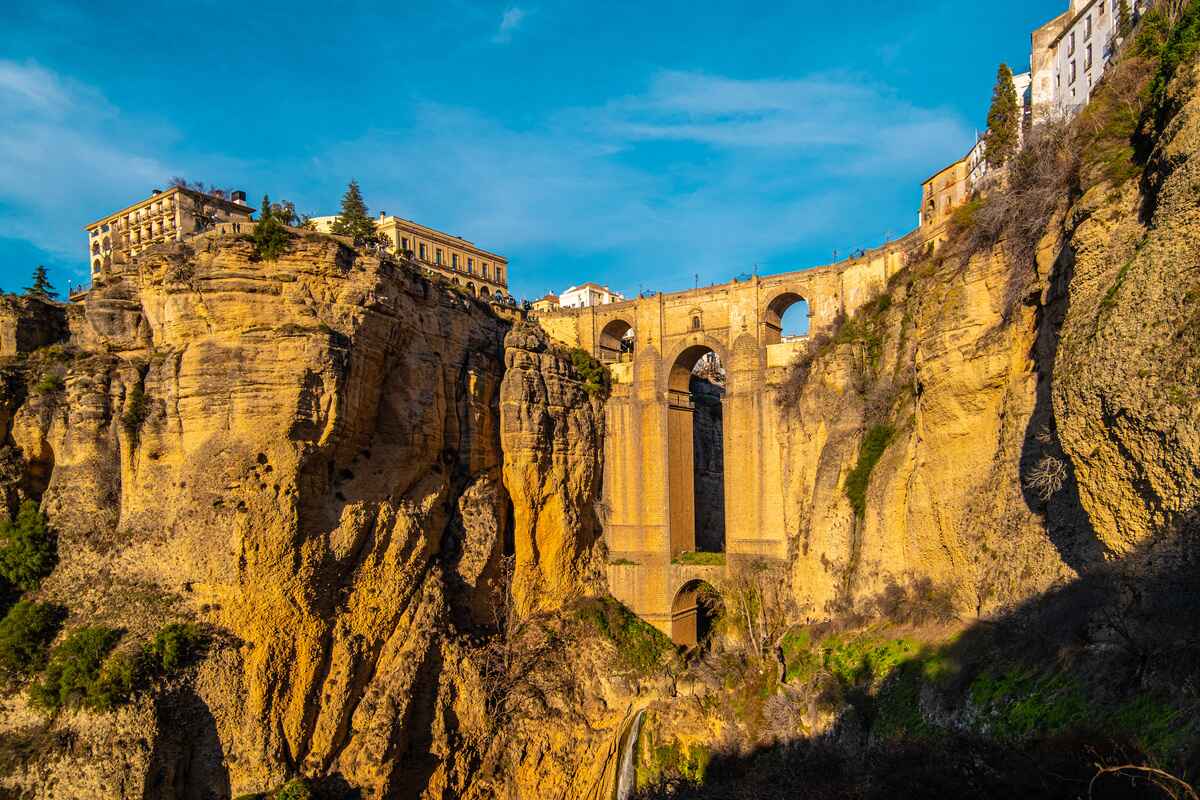The Prado Museum — a treasure trove of European art
![]()
The Museo Nacional del Prado is one of the largest and most important fine art museums not only in Spain but also in Europe. It is part of Madrid’s Golden Triangle, along with the Museo Nacional Centro de Arte Reina Sofía and the Museo Nacional Thyssen-Bornemisza, and is one of the twenty most visited museums in the world.
The Prado National Museum in Madrid is a true treasure trove of European fine art. Its collection includes more than 8,600 paintings by great masters of the 12th-19th centuries, as well as collections of sculptures, drawings, photographs, printed publications, and works of decorative and applied art.
It is worth setting aside at least one day to explore the Prado Museum. To get the most out of visiting this stunning place, don’t try to see everything at once. You will get tired from running around the halls and will not be able to fully enjoy the masterpieces. Read our description of the Prado Museum to plan your visit and choose what to see first. And the remaining time can be spent getting to know lesser-known masterpieces. For example, go to room 51C on the first floor and admire the frescoes from two monasteries of the 12th century.
Prado Museum: A Brief History
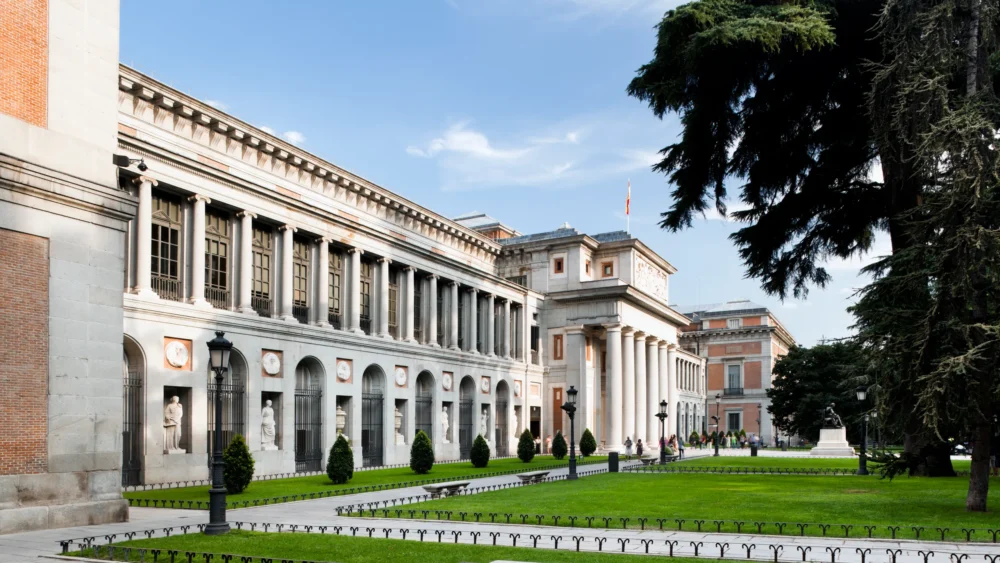
The history of the Prado Museum dates back to the reign of the Holy Roman Emperor Charles V of Habsburg (1500–1558), also known as Carlos I. He was the first of the Spanish monarchs to think about preserving and bequeathing masterpieces of painting. He left his collection of fine art to his son, Philip II.
The building in which the Prado Art Museum opened was designed in 1785 by the architect Juan de Villanueva on the orders of King Charles III. Initially, it was assumed that it would house the Natural Science Cabinet. Construction continued until 1808, but the opening was prevented by the invasion of French troops. In 1814, the grandson of Charles III, King Fernando VII, returned from exile. The monarch, inspired by his wife, Queen María Isabel de Braganza, decided to open the Royal Museum of Paintings and Sculptures in the building. It was supposed to present the artistic heritage of the crown and demonstrate to other European countries all the advantages of Spanish fine art.
The Prado Museum opened to the public in November 1819. His first catalog, dedicated exclusively to Spanish painting, contained only 311 paintings, although the collection at that time consisted of more than 1,500 canvases. Its core was the royal collection, which began to be collected by Charles V and was continued by subsequent generations of the Habsburgs and Bourbons.
In 1868, after the overthrow of Queen Isabella II, the museum was nationalized and received its current name — Museo Nacional del Prado. Since then, his collection has steadily increased through bequests, donations, and purchases.
About the Prado Museum building
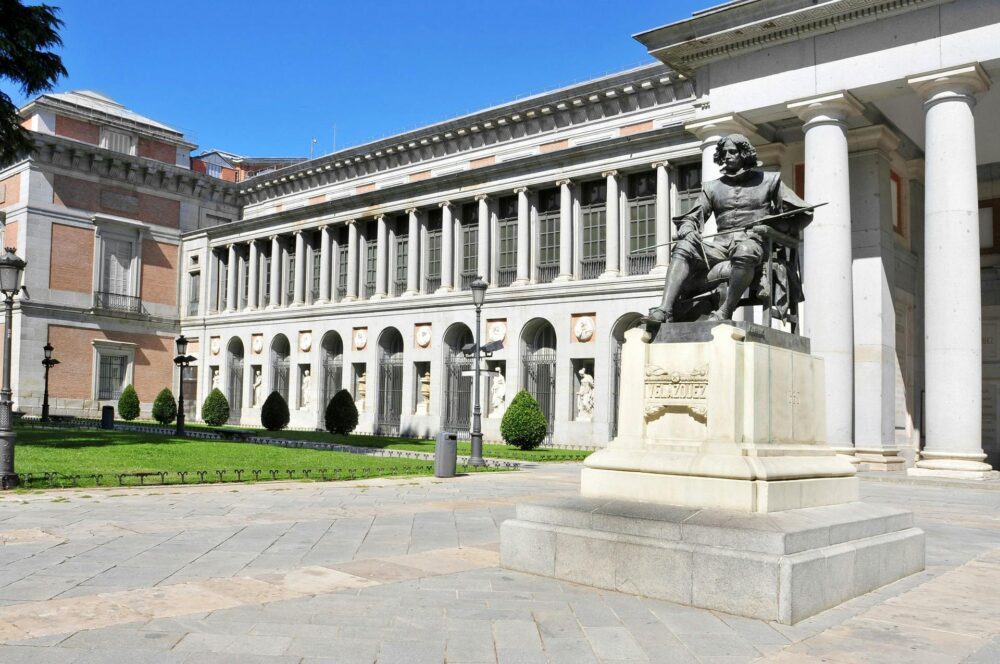
As stated above, the building that today houses the Prado National Museum was designed by the architect Juan de Villanueva. It has a rectangular base 200 meters long and two facades. One of them overlooks the Prado alley, and the second overlooks Buen Retiro Park. Even though the building was badly damaged during the French invasion, it was preserved in its original form. This magnificent example of neoclassicism is one of the architectural gems of Madrid.
Since the opening of the Prado Museum, its collection has constantly increased, so the building has been modernized and expanded all the time. From 1900 to 1960, several small pavilions were added to it. The second stage was the annexation of two nearby buildings. These were the Casón del Buen Retiro and the Salón de Reinos — the only surviving buildings of the grand ensemble of the Buen Retiro Palace.
The last large-scale modernization of the Prado Museum took place in 2007. According to the design of the Spanish architect Rafael Moneo, the exhibition hall in the main building was increased to 16,000 m², and a building in a modernist style, called El Cubo de Moneo, was erected nearby. It is connected to the main building of the museum by an underground gallery in which a shop and cafeteria are located.
Exposition of the Prado Museum: the most famous works
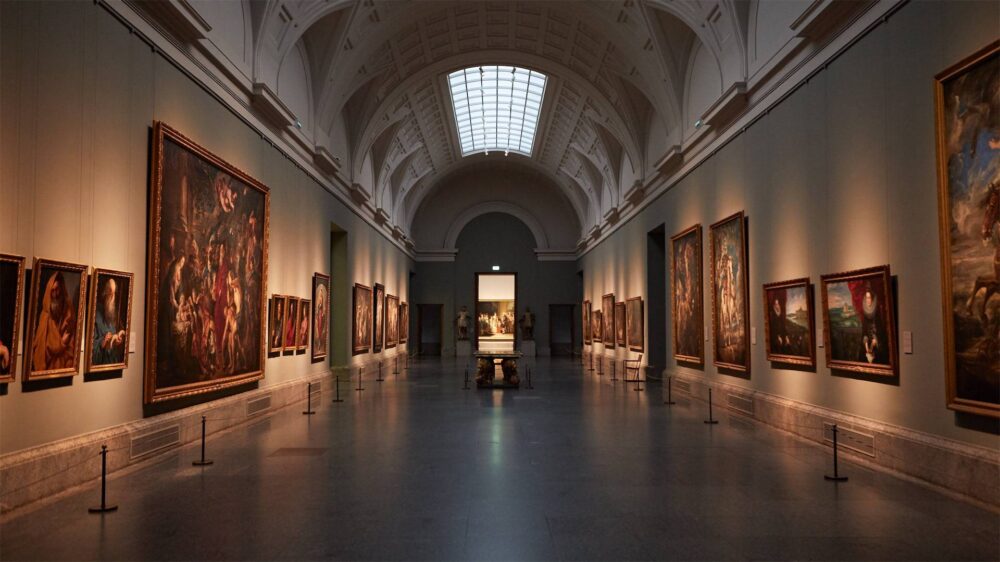
Initially, the collection of the Prado Museum contained only paintings by Spanish artists. But over several centuries, the collection has grown significantly and now also includes works by Italian, Flemish, German, Dutch, and French masters. Today, the Museo Nacional del Prado has one of the world’s finest collections of European art, dating from the 12th to the early 20th centuries.
Of course, even in a whole day, it is impossible to see all the masterpieces of the Prado Museum. But you will have time to get acquainted with the best paintings. Our review of the museum exhibition will help you plan your visit. And if you don’t want to waste time planning and waiting in line, order а guided tour of the Prado Museum.
Works by artists of the Spanish school of painting
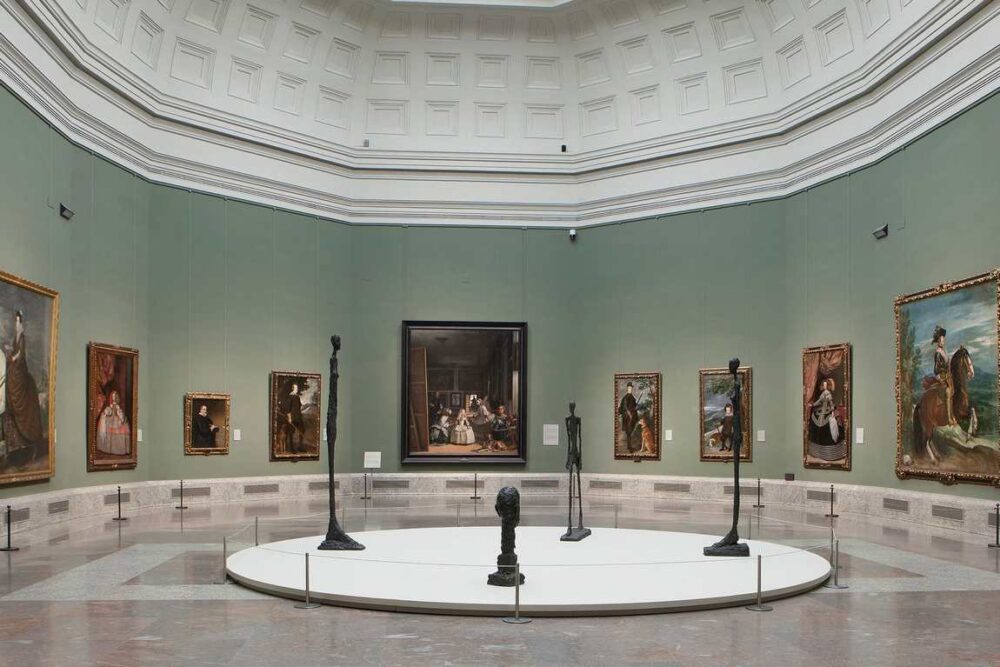
The Prado Museum has the largest collection of Spanish paintings in the world. The exhibition occupies three floors and includes more than 2,800 paintings dating from the 12th to the beginning of the 19th centuries. Particularly significant are the collections of works by Goya (130 units) and Velázquez (48). The galleries also display masterpieces by Juán de Flandes, Pedro Berruguete, Luis de Morales, Zurbarán, Correa del Vivar, Juan de Juanes, El Greco, Maino, Ribera, Alonso Cano, Murillo, Luis Meléndez, Bayeus, Paret and other masters.
Goya (1746-1828)
Francisco José de Goya y Lucientes is one of the most prominent representatives of the era of romanticism. He was born in 1746 in Zaragoza and studied in the local workshop of the painter Luzana y Martinez. Later, he lived and worked in Rome and Madrid, and was a court artist for the Spanish kings Charles IV and Ferdinand VII.
Over half a century of his creative life, Goya painted about 700 paintings and made 280 etchings and about 1000 drawings and cardboards for tapestries. The artist worked in different genres, creating portraits, still lifes, historical and religious subjects. Those interested in Goya in the Prado will be satisfied because the museum contains the world’s largest collection of the artist’s works and displays his most famous paintings.
It will take a lot of time to get acquainted with all the Goya paintings in the Prado, but some of them are definitely worth seeing. Start with the Christ Crucified, which depicts the martyrdom of Christ. It clearly showed the connection between the artist’s creativity and religion. Another interesting painting on a religious theme is The Holy Family with the Infant Saint John the Baptist.
Goya’s favorite models were beauties from the people — the so-called majas. The Prado Museum displays two famous works from this cycle — The Clothed Maja and The Naked Maja. In the last years of his life, the artist painted the painting The Milkmaid of Bordeaux. The model was his distant relative Rosario, who helped run the household.
From 1819 to 1823, Goya created a series of 14 frescoes called Black Paintings. All of them were transferred to canvas and are now kept in the Prado Museum. Be sure to take the time to explore these unusual works.
El Greco (1540-1614)
Domenikos Theotokopoulos, better known as El Greco, is a painter, architect, and sculptor of Greek origin. He was born in Crete, studied icon painting in Venice, worked in Rome, and only in 1577 came to Spain. Until his death, El Greco lived in Toledo, and it was here that he wrote his best works.
Getting to know El Greco’s masterpieces in the Prado will bring special pleasure to connoisseurs of the Spanish Renaissance. The exhibition features the artist’s most famous painting, The Nobleman with his Hand on his Chest, which is considered one of the best examples of portraiture of the 16th century. Other famous works in this genre are Portrait of a Young Nobleman, Portrait of a Doctor, and An Elderly Gentleman.
El Greco’s paintings, created in the genre of religious painting, are also worthy of attention. The most interesting among them are The Descent of the Holy Spirit, The Holy Trinity, The Baptism of Christ, and The Coronation of the Virgin.
Velazquez (1599-1660)
Diego Rodríguez de Silva y Velázquez is one of the most prominent representatives of the Madrid school of the golden age of Spanish painting and the court artist of King Philip IV. At the beginning of his creative life, he worked in the bodegones genre, depicting ordinary people – peasants, artisans, cooks. Living at court, Velazquez turned to ancient subjects and created magnificent ceremonial portraits of the king and members of the royal family, as well as several paintings on religious themes.
Diego Velazquez in the Prado is represented by 65 works. The first place among them is rightfully occupied by the world-famous masterpiece Las Meninas. It depicts the scene of the artist painting a group portrait of the Spanish King Philip IV with his wife, daughter, and niece. Also worthy of attention are the magnificent individual portraits of Philip IV, Queen Maria of Austria, Infanta Maria Teresa and Margaret, and Prince Balthazar Carlos.
Velázquez’s most famous paintings in the Prado Museum also include The Triumph of Bacchus, The Crucified Christ, and The Adoration of the Magi. The work Surrender of Breda is recognized as one of the most brilliant creations of battle painting.
Coelho (1531-1588)
Alonso Sánchez Coelho was a portrait painter who worked at the court of Philip II. It is therefore not surprising that his most famous works are associated with the royal family. Coelho also painted religious subjects, but it was his portrait works that brought him fame. The Prado Museum houses 14 of his paintings, including Archduke Ernest of Austria, Infanta Isabel Clara Eugenia and Magdalena Ruiz, Vista de la ciudad de Sevilla, The Mystic Marriage of Saint Catherine, Lady with a Fan, and, presumably, a self-portrait of the artist.
Zurbaran (1598-1664)
Francisco de Zurbarán is a representative of the Seville School of Painting. At the very beginning of his creative career, he set himself the task of painting only from life and did not deviate from this rule throughout his life. Zurbaran was a court painter and also carried out many commissions for temples and monasteries. Even Spanish monasteries founded in South America bought his paintings.
The Prado Museum presents a series of works by Zurbaran dedicated to the exploits of Hercules: Hercules and the Hydra, Hercules separates Mounts Calpe and Abylla, Hercules fighting the Nemean Lion, The Death of Hercules. The artist’s collection of works also includes the painting The Defense of Cadiz against the English.
Masterpieces by masters of the Flemish and Dutch schools
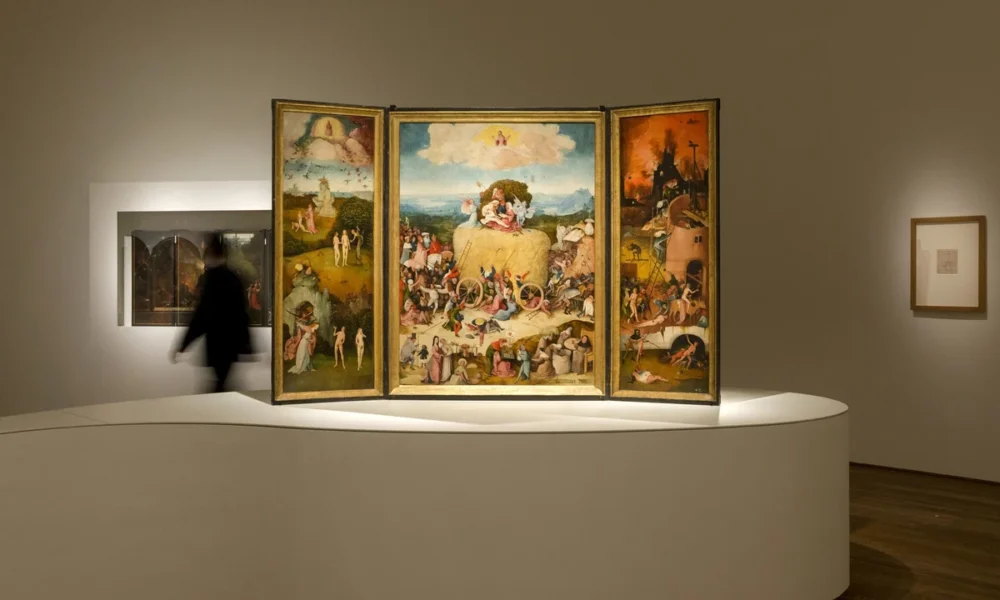
The Prado Museum owes its rich collection of works by Flemish and Dutch masters to the Spanish kings. Starting from the 16th century, they brought to the country the best examples of fine art from subject European states. The core of the collection consists of masterpieces by Peter Paul Rubens, Hieronymus Bosch, Rogier van der Weyden, Robert Campin, Rembrandt, Anthony van Dyck, Pieter Bruegel and Jacob Jordaens.
Bosch (1450-1516)
Jeroen Anthony van Aken, better known as Hieronymus Bosch, is one of the famous Dutch artists of the Northern Renaissance. About ten paintings and twelve drawings have survived from his creative heritage. Bosch is considered one of the most mysterious masters in the history of Western art. The symbolism of his works is still a subject of debate among art critics.
The Prado Museum owns the world’s largest collection of Bosch paintings. Here you can see the huge altar triptychs that made the artist famous – The Hay Wagon, The Garden of Earthly Delights, and The Adoration of the Magi. Among the most interesting exhibits of the Prado Museum is also the work Table of the Seven Deadly Sins, which hung in the bedroom of King Philip II, whose favorite artist was Bosch. In addition, the Prado collection includes the painting The Temptation of Saint Anthony, which is also attributed to the master’s brush.
Bruegel (1525-1569)
Pieter Bruegel the Elder is a Dutch artist of the Northern Renaissance, a master of landscapes and paintings of the everyday genre. He founded the “peasant genre” and created many allegorical compositions based on folk proverbs.
Bruegel in the Prado is represented by two paintings that brought him worldwide fame. The work The Triumph of Death, which reflected the anxious mood that reigned in the Spanish Netherlands on the eve of the revolution, is one of the museum’s hallmarks. The painting The Wine of Saint Martin’s Day is also worthy of attention – the largest currently known painting by Pieter Bruegel.
Rembrandt (1606-1669)
Rembrandt Harmens van Rijn is an artist from the Golden Age of Dutch painting. He was not only a painter but also an engraver using the etching technique. In his works, which varied in genre, he was able to convey the entire spectrum of human emotions. But it took two whole centuries to appreciate the true significance of the artist’s work.
Fans of Rembrandt can see one of his paintings, Judith at the Banquet of Holofernes, painted in 1634, in the Prado Museum. The exhibition also features five etchings that reproduce the author’s original works or fragments thereof: Hombre joven con bigote y sombrero, Anciano con gorra y barba, Rembrandt con Saskia sobre sus rodillas en la parábola del hijo pródigo, Rembrandt con un avetoro, Hombre con la mano apoyada en la frente.
Rubens (1577-1640)
Peter Paul Rubens is a Flemish painter, one of the founders and main representatives of Baroque art. He worked in many genres — painted portraits and paintings with allegorical and mythological subjects, created historical canvases and landscapes, and made sketches for book illustrations and tapestries. Rubens’ creative heritage includes about 3,000 works. He created most of them together with his students and colleagues.
The Prado Museum’s collection includes 124 works by Rubens. Among them are the world-famous paintings The Adoration of the Magi, The Three Graces, The Garden of Love, Saint George and the Dragon, The Immaculate Conception, The Death of Seneca, as well as a portrait of Marie de Medici, painted in 1622.
Van der Weyden (1400-1464)
Rogier van der Weyden is one of the founders of early Netherlandish painting. In his works, he focuses on the inner world of man. And all his work is focused on understanding the individuality of the human person. Among the best works of art of the Prado Museum are three paintings by van der Weyden: The Virgin and Child, also called Durán Madonna, The Descent from the Cross, and La Piedad. The exhibition also includes the work The Crucifixion, the author of which was inspired by van der Weyden’s paintings.
Van Dyck (1599-1641)
Sir Anthony (Antoun) Van Dyck is one of Rubens’ most famous students, a painter, engraver, and master of court portraits. He became the first artist to King Charles I of England and had a significant influence on the work of English portrait painters who worked after him. In addition to portraits, Van Dyck created paintings on mythological themes.
The Prado Museum displays the work The Crowning with Thorns, which the artist painted at the age of 18. Lovers of religious subjects will appreciate the paintings The Lamentation, The Taking of Christ, The Brazen Serpent, and Pietà. And connoisseurs of the portrait genre will like the paintings Carlos I de Inglaterra a сaballo, Frederick Henry, Prince of Orange, Carlos II de Inglaterra, Endymion Porter and Anthony van Dyck.
Works by artists of the Italian school of painting
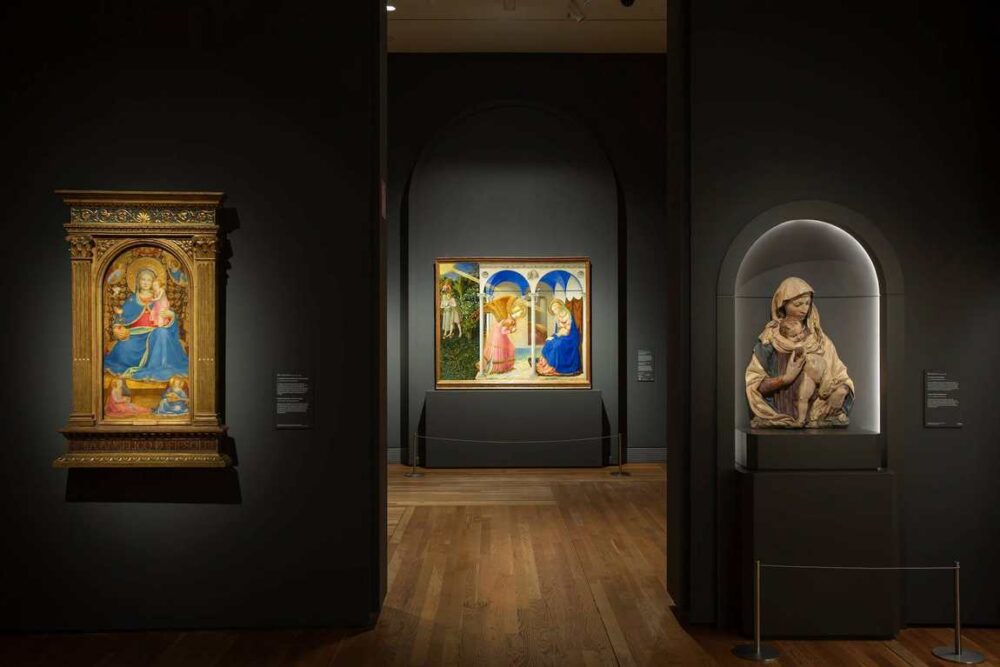
The collection of Italian masters in the Prado Museum numbers about 1,000 works and is second in volume only to the collection of Spanish artists. When purchasing paintings in Italy, the kings of Spain preferred paintings by representatives of the Venetian school. Now the Prado Museum houses works by Raphael, Titian, Botticelli, Tintoretto, Veronese, Mantegna, and other painters.
Leonardo da Vinci (1452-1519)
When talking about what is what to see in the Prado Museum, one cannot fail to mention the works of one of the most famous representatives of the Renaissance — Leonardo da Vinci. There are no originals of the great master in the Prado. But the collection contains the earliest known copy of the Mona Lisa. The quality of its execution is very high — all the smallest nuances are taken into account. Experts believe that only someone who worked with the artist could have created the painting. Anyone can see La Gioconda at the Prado Museum — it is exhibited in room 052B. If you don’t want to wait in a long line, book a guided tour to enter the museum through a separate entrance.
Caravaggio (1571-1610)
Michelangelo Merisi da Caravaggio is the founder of the genre of realism and one of the greatest masters of the Baroque. Not a single sketch of his has survived — the artist immediately painted even the most complex compositions on canvas.
The Prado Museum displays one of Caravaggio’s famous paintings, David and Goliath, also known as David with the Head of Goliath or David Defeating Goliath. The artist painted it at the very beginning of his career when he was a member of the family of Cardinal Francesco Maria Del Monte. The canvas depicts a famous biblical story – the victory of young David over the champion of the Philistines, the giant Goliath. Among the exhibits of the Prado Museum, there is also a copy of Caravaggio’s Saint Catherine of Alexandria, the original of which is now kept in the Thyssen-Bornemisza National Museum.
Raphael (1483-1520)
Among the best paintings in Prado are works by Rafael Santi, one of the most famous masters of the High Renaissance. He lived only thirty-seven years but managed to become one of the most famous and wealthy artists in Italy. By order of Pope Leo X, Raphael painted cardboard for the tapestries of the Sistine Chapel based on the plots of the book about the Acts of the Holy Apostles, designed several rooms and loggias in the Papal Palace, and also created many altar images, among which is the famous Sistine Madonna.
Works by Raphael in the Prado Museum can be seen in room 049. The exhibition includes three paintings by the artist — Christ Falling on the Way to Calvary, The Holy Family with Raphael, Tobias, and Saint Jerome, also known as Madonna with the Fish, and The Holy Family (Pearl). Here you can also see the painting The Holy Family under an Oak Tree. Its composition was developed by Raphael, and he also made the first sketches. And his student Giulio Romano retouched and finalized the work.
Titian (1488/1490-1576)
Titian (Tiziano) Vecellio is the largest representative of the Venetian school of the High and Late Renaissance. His name is on par with Leonardo da Vinci, Raphael, and Michelangelo. Titian was not even 30 years old when he was recognized as the best artist in Venice. In the Italian commune of Pieve di Cadore, where the painter was born, he is called Titian the Divine.
He is one of the most famous artists of the Prado Museum, which owns 49 works by the master. In the exhibition, you can see the famous paintings The Adoration of the Magi, The Virgin and Child between Saints Anthony of Padua and Roch, The Worship of Venus, Saint John the Baptist, Venus and Adonis, Danae.
Tintoretto (1519-1594)
Jacopo Robusti, known as Tintoretto, was an artist of the Venetian school of the late Renaissance. He was born in this city of canals and received his nickname thanks to his father’s profession. Translated from Italian, tintoretto means “son of a dyer.”
Having discovered his son’s extraordinary ability to paint, his father apprenticed Tintoretto to Titian at a very young age. But the boy spent only 10 days in the artist’s studio. As legend has it, Titian did not want to leave him near him, foreseeing him as a dangerous rival.
Tintoretto carried out many orders from religious brotherhoods of the laity – scuol. His most famous series of paintings was written for the Scuola Grande di San Rocco. The most important order for the artist was canvases for the Doge’s Palace, which was being restored after several fires in 1574-1577.
The Prado Museum owns 25 works by Tintoretto, but many of them are kept in storage and are not exhibited. In the exhibition, you can see the famous paintings The Washing of the Feet, Joseph and the Wife of Putiphar, Moses rescued from the Nile, Gentleman with a Gold Chain, The Queen of Sheba and Salomon.
Fra Angelico (1400-1455)
Fra Beato Angelico was an Italian Early Renaissance artist, a Dominican monk, and a saint of the Catholic Church. In 1983 he was beatified, and in 1984 he was canonized. Fra Angelico began his creative activity by creating illustrations for religious books, and his first significant work was painting altars in the monastery of San Marco in Florence. Appreciating the artist’s talent, Pope Eugene IV summoned him to Rome to decorate the Church of the Epiphany in the Vatican with frescoes. Fra Angelico’s students were the painters Benozzo Gozzoli and Antoniazzo Romano.
At the Prado Museum, you can admire four paintings by Fra Angelico. The most famous of them is La Anunciación. The human-sized altarpiece, painted in tempera on a wooden board, depicts the scene of the appearance of the Archangel Gabriel to the Virgin Mary. It is worth seeing other masterpieces of the master: La Virgen de la granada, bought by the museum for 18 million euros, a large altar image with scenes from the life of the Virgin Mary, and Funeral de san Antonio Abad.
Guido Reni (1575-1642)
Guido Reni is an Italian painter and engraver of the Bolognese school. He was born in Bologna and studied with the Flemish master Denis Calvert. The artist painted the facade of the Palazzo Zani in Bologna, created the image of St. Benedict in the Desert for the Bolognese church of San Michele in Bosco, and in Rome, commissioned by Cardinal Borghese, he painted the painting The Crucifixion of St. Peter. Guido Reni’s outstanding works also include the work Adoration of the Cross for the Church of San Gregorio, which was commissioned by Pope Paul V. Towards the end of his life, the artist became interested in gambling, which ruined his talent.
Fans of Guido Reni’s work will be able to see both the master’s original works and their copies at the Prado Museum. The exhibition features famous paintings Hippomenes and Atalanta, Saint Catherine of Alexandria, Saint Sebastian, Cleopatra, and Saint James the Greater.
French and German schools of painting
The collection of French paintings at the Prado Museum is based on works of art acquired by the Spanish kings Philip IV and Philip V. The collection includes about 300 paintings that span the period from the 16th to the early 19th centuries.
On the ground floor of the museum, there are works by Nicolas Poussin, one of the founders of the art of classicism. You will be able to see his paintings Parnassus, Saint Cecilia, The Hunt for Meleager, and others. The same gallery exhibits works by Claude Lorrain, an outstanding master of landscape painting of French classicism. These are paintings he painted on behalf of the Spanish King Philip IV.
The collection of paintings by German artists in the Prado Museum could be called very mediocre, if not for a series of works by Albrecht Durer, one of the greatest masters of the Northern Renaissance. The collection includes six of his works — four paintings and two sketches for engravings. You will be able to see Durer’s self-portrait — the smallest of the three knowns, the panels Adam and Eve and Portrait of a Man.
Prado Museum sculpture
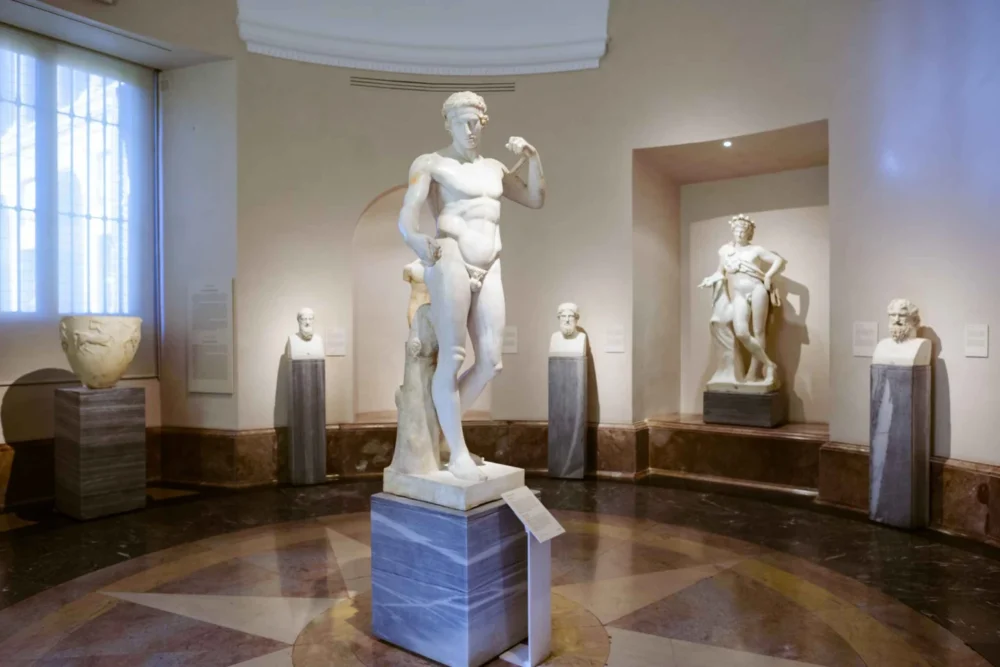
The Prado Museum collection of sculptures has more than 1000 objects. The exhibition presents classical Greek and Roman works, works of the Renaissance, and creations of masters of the 17th – 19th centuries.
The basis of the exhibition is a collection of Greco-Roman sculptures created by the Spanish kings. Its pearls are the composition Orestes and Pylades, also known as The San Ildefonso Group, and the pedestal of the monument from the time of Emperor Augustus, Apotheosis of Claudius. There are very few medieval sculptures in the Prado Museum, and among the works of the Renaissance, portraits made by the father and son of Leoni stand out. Top exhibits also include El Greco’s statues of Epimetheus and Pandora.
Baroque sculpture in the Prado Museum is represented by bronze statues that Velazquez brought from Italy to decorate the Alcazar, as well as a series of models of equestrian portraits of Spanish monarchs of the 17th-18th centuries, made by Foggini or Vaccaro. The collection of Spanish neoclassical sculpture includes works by José Álvarez Cubero — Diana, Apolo inspirado por la música, La defensa de Zaragoza, and Joven con cisne.
How to get to the Prado Museum
The Prado Museum is located at Paseo del Prado, s/n, 28014 Madrid. You can get there by metro (Banco de España and Atocha stations) or by buses no. 9, 10, 14, 19, 27, 34, 37 and 45.
Opening hours and ticket prices
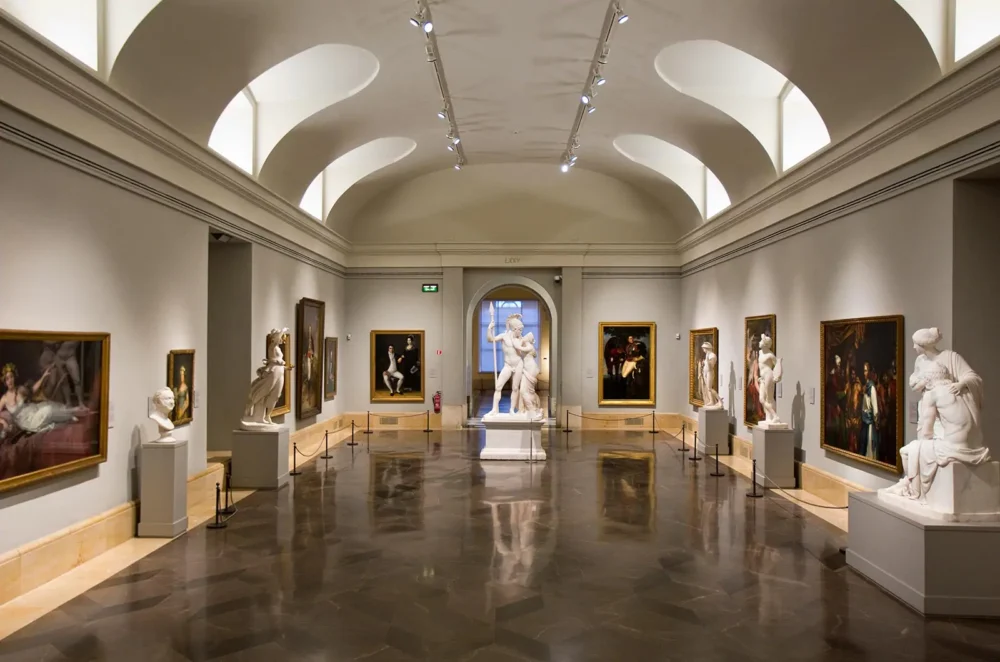
From Monday to Saturday, Prado Museum opening times are from 10:00 a.m. to 8:00 p.m., on Sundays and holidays — from 10:00 a.m. to 7:00 p.m. On December 24 and 31 and January 6, the museum closes at 2:00 p.m. You can view the current working hours on the official website of the Museo Nacional del Prado.
Standard tickets to the Prado Museum cost €15. You will have to pay an additional €5 for an audio guide, and €10 for a guided tour. For €24 you will receive not only an entrance ticket but also a guide to the Prado Museum. And for €32 you can buy Abono Paseo del Arte. This pass allows you to visit three attractions at once: the Prado Museum, the Reina Sofia Museum, and the National Museum of Thyssen-Bornemisza. Private tours of the Prado Museum cost €50 per person.
Children under 18 years of age, students from 18 to 25 years of age, postgraduate students in the field of art, people with disabilities, officially registered unemployed people, and journalists can visit the Prado Museum for free. For people over 65 years of age, large families, and youth card holders, a reduced rate of €7.50 is provided. You can check ticket prices for the Museo Nacional del Prado using the link above.
Prado Museum Store
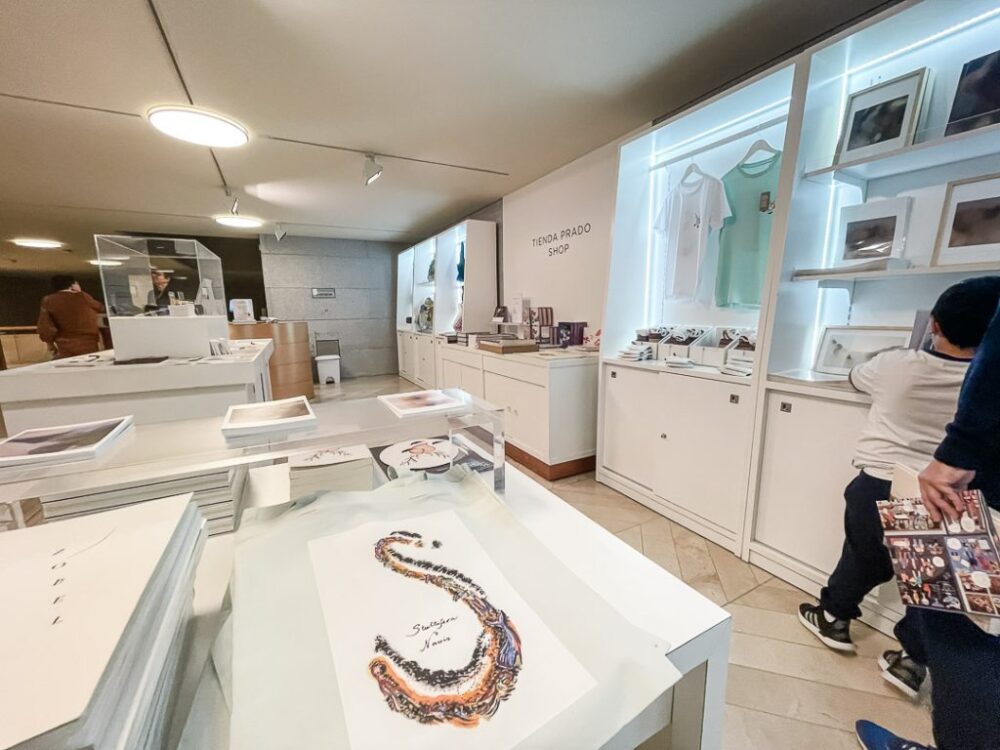
The Prado Museum’s main store is located in the lobby that connects the main building to El Cubo de Moneo. Another retail outlet is located in the Ionian Gallery, on the first floor of the historical building. When the museum hosts temporary exhibitions, additional small shops open near the entrances to Exhibition Halls A and B on the ground floor. The bookshop is located next to galleries dedicated to 19th-century art.
Attractions near the Prado Museum
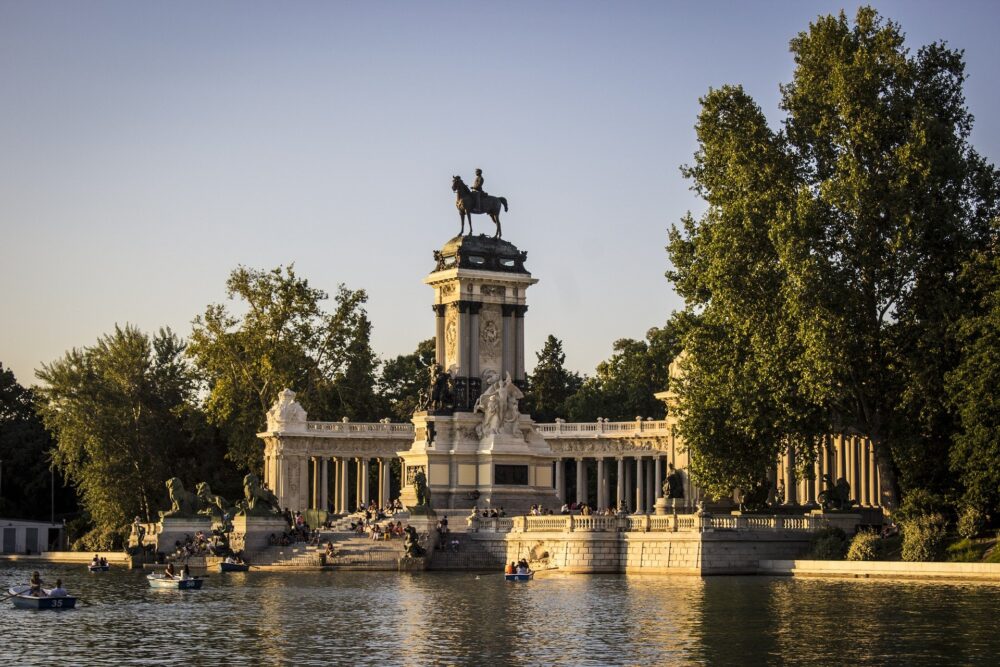
If you are not planning a long tour of the Prado Museum, you can combine a visit to other attractions. The Museo Nacional del Prado building is located next to one of the largest parks in Madrid — Parque del Buen Retiro. Here you can walk near the lake, ride a boat, and admire the beautiful flower beds and fountains.
Not far from the museum is the Royal Botanical Garden of Madrid, where about 5,000 plant species are collected. And just a few minutes’ walk away are the Reina Sofía Art Center and the Thyssen-Bornemisza Museum, which together with the Prado make up Madrid’s Golden Triangle of Arts. You can also explore the Porta de Alcalá, an ornate triumphal arch near Retiro Park, and visit the National Archaeological Museum.
Hotels near the Prado Museum
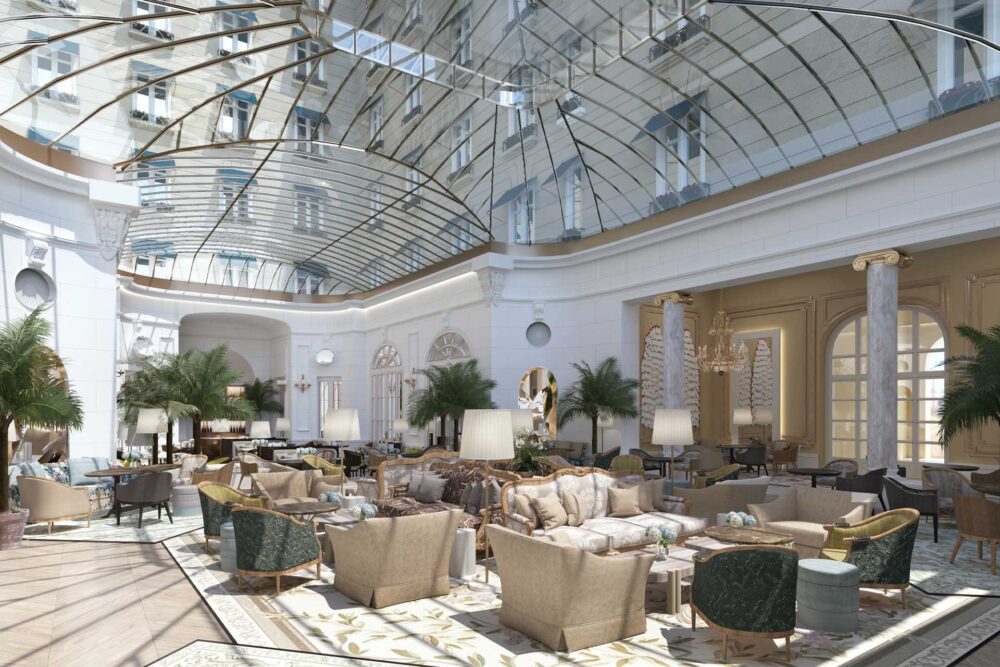
For those who want to stay near the Prado Museum, we have selected several hotels:
- Mandarin Oriental Ritz, Madrid (5 stars) is located in a luxurious Belle Epoque palace in the heart of Madrid’s Arts Triangle. The Prado and Thyssen-Bornemisza Museums are just 200 meters away.
- Mercure Madrid Centro (4 stars) will appeal to those who value silence. The building is located on a quiet street, a short walk from the Prado Museum, Retiro Park, Reina Sofia Center, and the Royal Botanical Garden.
- NH Collection Madrid Paseo del Prado (4 stars) is located on Paseo del Prado, offering beautiful views of the Fountains of Neptune. The hotel building is a small 19th-century palace designed by the architect Antonio Palacios. The Prado Museum is located across the street from it.
- Hotel Mora by MIJ (2 stars) is a budget hotel on Paseo del Prado, opposite the Botanical Garden. The Prado Museum and Retiro Park are about a 10-minute walk away, but there are plenty of restaurants and tapas bars in the nearby streets.
Restaurants and cafes near the Prado Museum
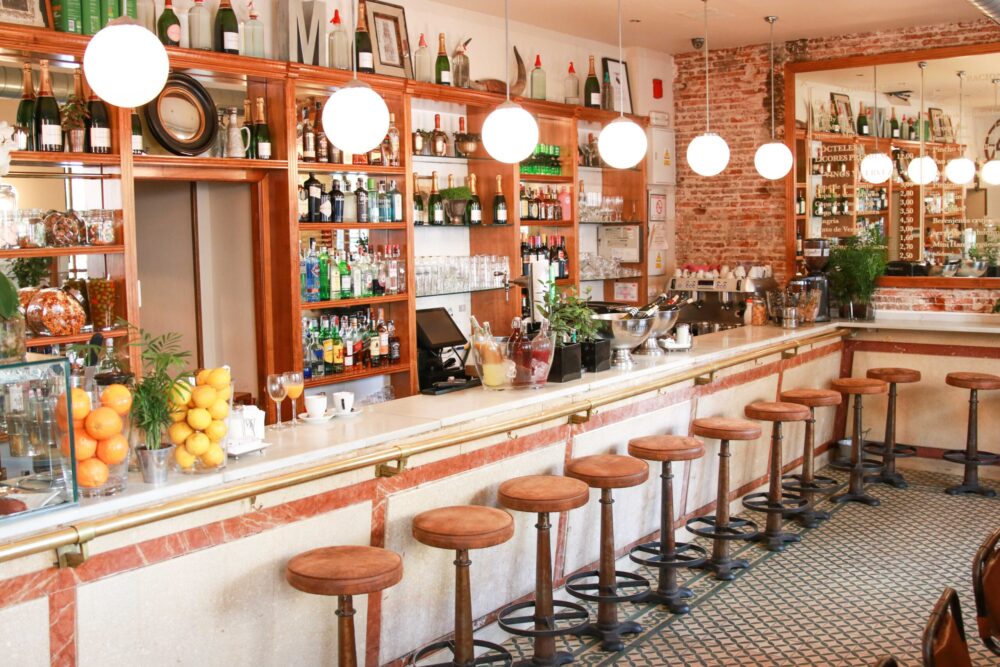
Exploring the Prado Museum can take several hours, and you’ll probably want to grab a bite to eat after your tour. Fortunately, there are establishments nearby to suit every taste.
- Murillo Café is an elegant urban bistro located next to the Prado Museum’s Porta Murillo. Guests can enjoy Mediterranean cuisine, including vegan and gluten-free options.
- El Botánico is a restaurant with one of the best terraces in Madrid. Here they cook according to traditional Spanish cuisine recipes. The menu is complemented by a wine list that includes more than 50 items.
- Trattoria Sant Arcangelo is a cozy Italian restaurant where you can order excellent pasta, pizza, risotto, and burrata, and treat yourself to tiramisu for dessert.
- The Brisket restaurant offers guests an exclusive menu developed by chef Antonio Fernandez-Gijicos based on traditional Spanish cuisine. All dishes are prepared from ingredients supplied by local farmers.
- Palm Court is an elegant restaurant at the Mandarin Oriental Ritz. The restaurant’s menu includes a large selection of dishes from modern classic cuisine, including vegan ones.
- Expressio Café is a restaurant located between the Prado Museum, the Botanical Garden, and the Retiro Park. Here you can try delicious dishes from all over the world and treat yourself to homemade cakes.
Prado Museum on the map Madrid
Add our article to your bookmarks – there is a lot of useful information in it.
If you liked this publication, subscribe to our newsletter and Telegram.
Also join us on Pinterest to keep up to date with the latest news.
